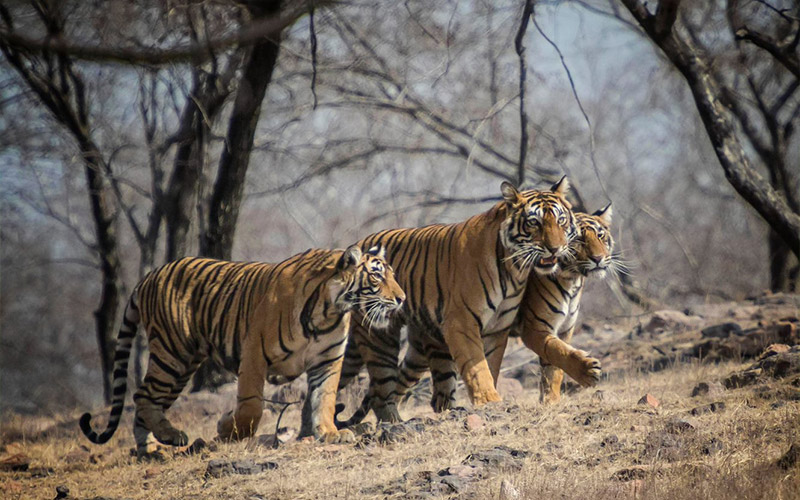India's Wildlife Sanctuaries are a testament to the nation's dedication to preserving its natural heritage. These protected areas serve as vital havens for various species of plants and animals, contributing to the country's biodiversity. In this article, we will take you on a journey through the captivating world of Wildlife Sanctuaries in India, sharing insights based on first-hand experiences and reliable sources. So, let's embark on this adventure and explore the magnificent wilderness of India!
Wildlife Sanctuaries in India: A Diverse and Enchanting Landscape
India boasts a diverse range of Wildlife Sanctuaries that encompass mountains, forests, grasslands, and wetlands. Each sanctuary is unique and offers a distinct ecosystem, making it an exciting destination for wildlife enthusiasts and nature lovers alike.
Sunderbans Wildlife Sanctuary: A Mangrove Paradise
The Sunderbans Wildlife Sanctuary, located in West Bengal, is a stunning mangrove forest that teems with life. Home to the majestic Bengal Tiger, this sanctuary is a UNESCO World Heritage Site and a Biosphere Reserve. Explore its intricate network of waterways and witness the enchanting dance of fireflies at night.
Jim Corbett National Park: Roaming with the Tigers
Named after the legendary conservationist Jim Corbett, this national park in Uttarakhand is India's oldest and a must-visit destination for wildlife enthusiasts. Experience the thrill of spotting the elusive Royal Bengal Tiger and immerse yourself in the raw beauty of the Himalayan foothills.
Kaziranga National Park: The Land of Rhinos
Nestled in the state of Assam, Kaziranga National Park is a symbol of India's conservation success story. It is home to two-thirds of the world's one-horned rhinoceros population, along with various other species like tigers, elephants, and water buffaloes. Explore its grasslands and marshes on an unforgettable jeep safari.
Ranthambore National Park: Where Tigers Roam Free
In the heart of Rajasthan lies Ranthambore National Park, one of India's most famous tiger reserves. The park's fort, lakes, and ancient temples add a touch of history to the wilderness. Witness the charismatic tigers and other wildlife against the backdrop of historic architecture.
Periyar Wildlife Sanctuary: Wildlife in the Lap of Nature
Nestled in the Western Ghats of Kerala, Periyar Wildlife Sanctuary is a lush haven for various species of flora and fauna. Take a boat ride on the serene Periyar Lake and spot elephants, Nilgiri langurs, and the elusive Nilgiri tahr.
Gir Forest National Park: The Last Abode of Asiatic Lions
Located in Gujarat, Gir Forest National Park is the only place on Earth where Asiatic lions roam free. Witness these majestic creatures in their natural habitat and appreciate the efforts of conservationists to save this critically endangered species.
Sundarbans National Park: A Delicate Ecosystem
The Sundarbans National Park, a UNESCO World Heritage Site shared between India and Bangladesh, is the world's largest mangrove forest. Explore its winding rivers and dense mangrove vegetation, which provides a safe haven for the endangered Royal Bengal Tigers and other unique wildlife.
Bandipur National Park: Where Wilderness Meets Serenity
Nestled in Karnataka's picturesque landscape, Bandipur National Park is a tranquil wilderness haven. Embark on a safari and witness the grace of Indian elephants, the agility of spotted deer, and the majesty of the Indian Gaur.
Kanha Tiger Reserve: The Inspiration Behind "The Jungle Book"
Inspiring Rudyard Kipling's "The Jungle Book," Kanha Tiger Reserve in Madhya Pradesh offers a glimpse into the enchanting world of Mowgli. Along with the charismatic tigers, spot leopards, sloth bears, and the endangered hard-ground barasingha.
Hemis National Park: In the Lap of Himalayan Giants
Tucked away in Ladakh, Hemis National Park is known for its unique alpine and cold desert ecosystem. Marvel at the rare snow leopards, ibex, and Tibetan wolves against the backdrop of snow-capped peaks.
Wildlife Sanctuaries in India: Promoting Conservation and Awareness
Apart from their role in preserving biodiversity, Wildlife Sanctuaries in India play a crucial role in promoting conservation and awareness. These sanctuaries educate visitors about the significance of protecting wildlife and the delicate balance of ecosystems.
Conservation Initiatives: Empowering Wildlife Guardians
Wildlife Sanctuaries in India actively engage in conservation initiatives, such as anti-poaching efforts, habitat restoration, and wildlife rehabilitation programs. These endeavors aim to protect endangered species and ensure their survival for future generations.
Responsible Ecotourism: Nurturing a Sustainable Future
Responsible ecotourism practices are encouraged in these sanctuaries to minimize the environmental impact and promote the welfare of wildlife. Visitors are educated about ethical wildlife viewing and the importance of respecting natural habitats.
Research and Monitoring: Understanding Wildlife Dynamics
Research and monitoring programs within the sanctuaries provide valuable insights into wildlife behavior, migration patterns, and population dynamics. This data aids in formulating effective conservation strategies.
Community Engagement: Involving Local Stakeholders
Wildlife Sanctuaries in India involve local communities in conservation efforts, fostering a sense of ownership and responsibility towards the wildlife and their habitats. This collaboration ensures sustainable coexistence between humans and wildlife.
Frequently Asked Questions
Are Wildlife Sanctuaries and National Parks the Same?
No, Wildlife Sanctuaries and National Parks differ in terms of management objectives and regulations. Wildlife Sanctuaries are primarily established for the conservation and protection of wildlife, where human activities are restricted. National Parks, on the other hand, are designated areas that aim to protect both wildlife and their habitats while allowing limited tourism and recreation.
